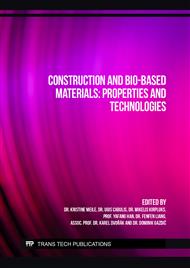p.189
p.197
p.204
p.215
p.222
p.229
p.235
p.241
p.247
Foam Glass Preparation from Waste Diatomite: Assessment of High Temperature Behaviour and Foaming Ability
Abstract:
This paper explores the possibilities of utilization of waste diatomite in foam glass production. Chemical and mineralogical composition, granulometry and high temperature behaviour of waste diatomite were characterized. Different possibilities of waste diatomite utilization in foam glass production were explored mainly via means of thermal analysis and hot stage microscopy. The effects of diatomite addition to waste glass were evaluated. Possibility of using NaOH as a foaming agent for foam glass production from waste diatomite and the effects of NaOH amount and reaction time on waste diatomite were investigated. Partial conversion of diatomite and clay to hydrates due to the reaction with NaOH lead to the decrease of the melting temperature and foaming of the melt was observed via hot stage microscopy. 30 wt. % NaOH addition allowed foaming of waste diatomite in the temperature ranges typical for foam glass production. Increased reaction time led to the intensification of the foaming process.
Info:
Periodical:
Pages:
235-240
Citation:
Online since:
October 2022
Authors:
Keywords:
Price:
Сopyright:
© 2022 Trans Tech Publications Ltd. All Rights Reserved
Share:
Citation:



